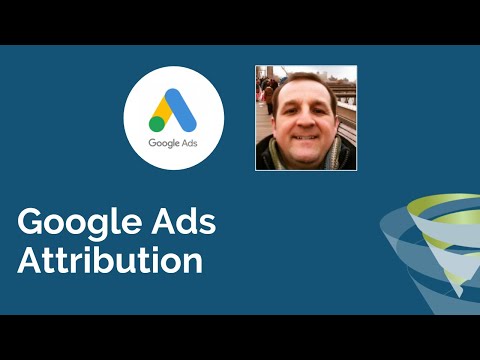In our latest T-Time Show, Tillison Consulting MD Mark Tillison gives you the ultimate guide to Google AdWords attribution, why it’s important and how you can use different attribution models not only to gain a clearer understanding of your ad performance, but also to optimise your website across the user’s conversion path.
AdWords attribution refers to the credit that’s given to the various components of your AdWords campaign – such as keywords and ad groups – after a user converts on your website. Using the AdWords Attribution Modelling Tool, you can attribute the value of your conversion to the user’s first click, last click or a combination of multiple clicks.

In this AdWords attribution T-Time show:
- What does AdWords attribution mean and why is it important for my campaigns?
- Click-assisted conversions and search funnels
- AdWords attribution models (last click, first click, linear, position-based, time decay and data-driven) and the pros and cons of each
- AdWords attribution modelling reports
- Why you should use AdWords conversion tracking rather than importing Google Analytics goals
Click-assisted conversions and search funnels
(00:46) Do you know how people actually behave on your website? A lot of people tend to think one-dimensionally that users will land on your website and convert straight away. The truth is that it’s actually quite rare for a single click to lead to a sale or an enquiry, and what actually happens is what we call a click funnel or a search funnel.
This usually means that your customer will search multiple times, visit multiple websites and probably visit your website more than once before they commit to converting – whether that’s buying something through your checkout if you’re an eCommerce store, or filling in your contact form if you’re looking to generate leads through your website.
The click funnel or search funnel is typically much longer if the product or service is quite technical or expensive – if you multiply those two together for something that is technical and also quite expensive then you can expect many more search impressions and clicks on your ads before someone will convert.
AdWords attribution models
AdWords last-click attribution
(02:36) AdWords last-click attribution is how it’s always been done until recently, where you’ve been given the option to change the AdWords attribution model. As a result it’s now thought of as an antiquated model.
Let’s say a user searches for a particular keyword and clicks on your ad, then later searches for the same term again and clicks back through to your website. Then they maybe search for something slightly different on their third occasion and click through, and maybe even then type in the name of your website, click your ad at that point and convert into a lead or a sale.
As the name suggests, last-click attribution places the whole value of that conversion on that final click, and no value was given to these earlier searches.
AdWords first-click attribution
(04:50) Rather unsurprisingly, AdWords first-click attribution places all of the value of a conversion on the first click. Your brand would get no credit if the brand search was the user’s final click.
AdWords linear attribution
(05:27) A particular favourite of Mark’s, AdWords linear attribution divides a conversion between the number of clicks. It’s worth mentioning here that a conversion doesn’t just equal ‘1’ – if you have conversion values – which we would particularly recommend if you are an eCommerce store – then the value of that sale gets divided in exactly the same way. For example, if you process a £200 sale, then each click with an AdWords linear attribution model would get £50 and 0.25 of a conversion.
This means that you can start looking in more detail at all of the keywords across your ad groups and campaigns, as well as all of the keywords you’re bidding on and the products you have running in your Google Shopping and see where they actually add value in a much clearer way.
AdWords position-based attribution
(07:26) AdWords position-based attribution comprises a mix of last click, first click and linear attribution. For example, AdWords will attribute 40% of the conversion and the conversion value to the first click, 40% to the last click, and the remaining clicks in the middle will get an equal share of the remaining 20%. If a user only clicks twice before a conversion, the conversion value would be divided 50-50 between those clicks.
AdWords time-decay attribution
(08:16) With AdWords time-decay attribution, the earlier clicks get less of the value of the conversion, and as the user gets closer to converting the last click(s) get much more attribution.
AdWords data-driven attribution
(08:46) AdWords data-driven attribution’s is Google’s own creation, with AdWords deciding that a particular search term, time or device for a particular sale is more valuable than the first, second or third step. You will need quite a number of conversions in a one-month period to qualify for data-driven attribution, so you might find that it is greyed out in your AdWords account until you qualify.
There’s no right or wrong way of doing this – you really have to look at your data and decide which is the best model for you and your data, products and website.
AdWords Attribution Modelling Reports
(10:21) AdWords Attribution Modelling Reports will allow you to compare the data with the different AdWords attribution models, and therefore determine which AdWords attribution model is going to be much more appropriate for your business.
You can use the Attribution Modelling Report to look at the number of conversions, the cost per conversion and then the Return on Ad Spend (RoAS) – the RoAS equals the amount you made from sales divided by the cost of achieving those sales. You can also change the history window which will have an impact on your data. This will be handy as some of your sales may have a larger sales funnel that exceeds the default view of 30 days.
The Attribution Modelling Report becomes much more important if you are working on an AdWords account where there are considerably more clicks, and where your desired conversion is a much more technical or expensive sale or enquiry.
How to change conversion attribution in AdWords
(15:58) So how do we change the AdWords attribution model? It’s actually pretty simple. Once you’ve gone through the Attribution Modelling Report and you’ve decided which is the right method of attributing the conversions for your data, you need to head to the Conversions section of your Google AdWords account settings, find the conversion that you want and edit its settings to have the attribution model that you want.
Please note: this change will only take effect from the point that you change it, so you won’t suddenly see different conversion values in your AdWords campaign historically.
AdWords conversion tracking
(17:28) Quite a lot of Google AdWords accounts will import the conversion tracking – or Goals – from Google Analytics. For Google AdWords campaigns, we would strongly recommend using Google AdWords native conversion tracking – this would only track data and clicks from your ads, as opposed to including clicks from any other sources – whether that’s through email, social media, Google Shopping, Bing Ads or otherwise.
You may think this will lead to over-reporting, but you should only really be accounting for traffic from non-AdWords sources when you want to look at the ‘wider picture’ and see more detail about the value between your different channels.
If you found this episode of T-Time useful, subscribe to our YouTube channel for more tips and advice on how to improve your business using Google AdWords and other online channels.








